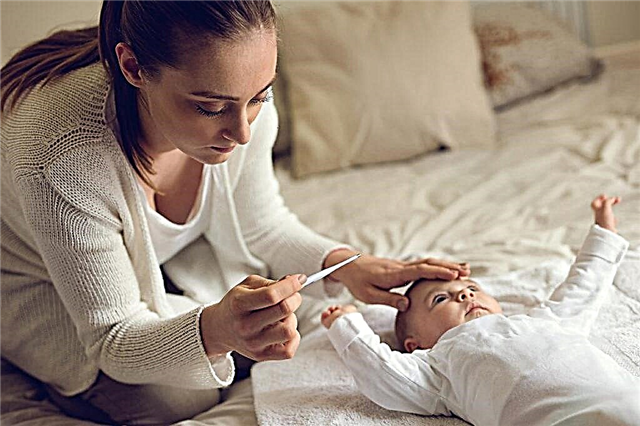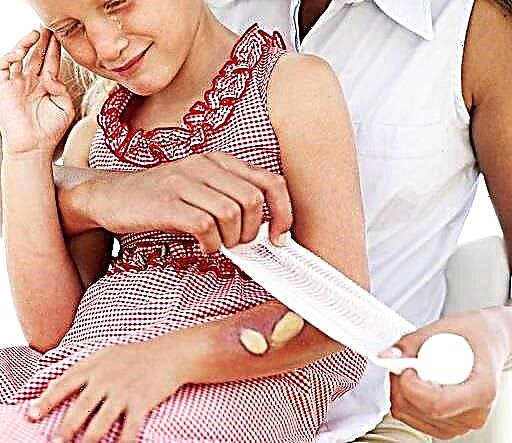Allergodermatosis is the undisputed leader among other allergic ailments in children. It is believed that the prerequisites for the development of atopy are laid even during the prenatal period. Under the influence of unfavorable environmental factors during the neonatal period, the first symptoms of allergic pathologies appear, which subsequently lead to serious complications.
Children's atopic dermatitis
Atopic dermatitis in infants is a chronic immune inflammation of the skin of a child, characterized by a certain form of rashes and their stages of appearance.
Children's and infantile atopic dermatitis significantly reduces the quality of life of the entire family due to the need to strictly adhere to a special therapeutic diet and hypoallergenic life.
Major risk factors and causes of atopic dermatitis
The risk factor for atopic dermatitis is often a hereditary burden of allergies and bronchial asthma. Factors such as constitutional features, malnutrition, and insufficiently good child care are also unfavorable.
Pathogenesis of atopic dermatitis in children
 To understand what atopic dermatitis is and how to treat it, knowledge about the pathogenesis of this allergic disease will help.
To understand what atopic dermatitis is and how to treat it, knowledge about the pathogenesis of this allergic disease will help.
Every year, the knowledge of scientists about the immunopathological processes occurring in the body with atopic childhood eczema is increasing.
In the course of the disease, the physiological skin barrier is disturbed, Th2 lymphocytes are activated, and the immune defense decreases.
Understanding the skin barrier
Dr. Komarovsky, in his articles popular among young parents, touches on the topic of the characteristics of children's skin.
Komarovsky highlights The 3 main features that are important in breaking the skin barrier:
- underdevelopment of sweat glands;
- fragility of the stratum corneum of the children's epidermis;
- high lipid content in the skin of newborns.
All these factors lead to a decrease in the protection of the skin of the baby.
Hereditary predisposition
Atopic dermatitis in infants can result from a filaggrin mutation, which changes the filaggrin protein, which ensures the structural integrity of the skin.
Atopic dermatitis is formed in children under one year of age due to a decrease in the local immunity of the skin to the penetration of external allergens: the biosystems of washing powder, epithelium and hair of pets, fragrances and preservatives contained in cosmetic products.
Prevention of atopic dermatitis in children
 Antigenic loads in the form of toxicosis of pregnant women, taking a pregnant woman of medications, occupational hazards, highly allergenic nutrition - all this can provoke an exacerbation of an allergic disease in a newborn.
Antigenic loads in the form of toxicosis of pregnant women, taking a pregnant woman of medications, occupational hazards, highly allergenic nutrition - all this can provoke an exacerbation of an allergic disease in a newborn.
Pregnant women at risk are advised to avoid contact with any kind of allergens:
- food;
- professional;
- household.
Prevention of allergies in infants can be natural, maximum long-term breastfeeding, rational use of medicines, treatment of diseases of the digestive system.
Classification of atopic dermatitis
Atopic eczema is divided by age in three stages:
- infant (from 1 month to 2 years);
- children's (from 2 years old to 13);
- teenage.
What does atopic dermatitis look like in children?
In newborns, the rash looks like redness with bubbles. The bubbles break open easily, forming a weeping surface. The baby is worried about itching. Children comb the rash.
Bloody-purulent crusts form in the field. Rashes often appear on the face, thighs, and legs. Doctors call this form of rash exudative.

In some cases, signs of wetness are not observed. The rash appears as spots with slight peeling. The scalp and face are more often affected.
At 2 years of age in sick children, the skin is characterized by increased dryness, cracks appear. The rash is localized in the knee and elbow fossa, on the hands.
This form of the disease is scientifically called "erythematous-squamous form with lichenization". In the lichenoid form, peeling is observed, mainly in the folds, in the elbow bends.
Facial skin lesions appear at an older age and are called "atopic face". There is pigmentation of the eyelids, peeling of the skin of the eyelids.
Diagnosis of atopic dermatitis in children
There are criteria for atopic dermatitis, thanks to which the correct diagnosis can be made.
Main criteria:
- early onset of the disease in an infant;
- itching of the skin, often manifested at night;
- chronic continuous course with frequent serious exacerbations;
- the exudative nature of the rash in newborns and lichenoid in older children;
- the presence of close relatives suffering from allergic diseases;
Additional criteria:
- dry skin;
- positive skin tests on allergy testing;
- white dermographism;
- the presence of conjunctivitis;
- pigmentation of the periobital region;
- central protrusion of the cornea - keratoconus;
- eczematous lesions of the nipples;
- strengthening of the skin pattern on the palms.
Laboratory diagnostic measures for severe atopic dermatitis are prescribed by a doctor after examination.
Complications of atopic dermatitis in children
A frequent complication in children is the addition of various kinds of infections. The open wound surface becomes the gateway for Staphylococcus aureus and Candida fungi.
Prevention of infectious complications consists in following the recommendations of the allergist on the features of the use of emollients (moisturizers).
List of possible complications of atopic dermatitis:
- folliculitis;
- boils;
- impetigo;
- annular stomatitis;
- oral mucosa candidiasis;
- candidiasis of the skin;
- Kaposi's herpetiformis eczema;
- molluscum contagiosum;
- genital warts.
Traditional treatment for atopic dermatitis
Therapy of atopic dermatitis in children begins with the development of a special hypoallergenic diet.
Hypoallergenic diet for atopic dermatitis in children
An allergist makes a special elimination diet for a mother with atopic dermatitis in a baby. Such a diet will help keep breastfeeding as long as possible.
Approximate elimination hypoallergenic diet for children under one year old with atopic dermatitis.

Menu:
- breakfast. Dairy-free porridge: rice, buckwheat, oatmeal, butter, tea, bread;
- lunch. Fruit puree from pears or apples;
- dinner. Vegetable soup with meatballs. Mashed potatoes. Tea. Bread;
- afternoon tea. Berry jelly with cookies;
- dinner. Vegetable and cereal dish. Bread;
- second dinner. Formula or breast milk.
The menu for a child, and especially for a child with atopic dermatitis, should not contain spicy, fried, salty foods, spices, canned food, fermented cheeses, chocolate, carbonated drinks. The menu for children with allergic symptoms is limited to semolina, cottage cheese, sweets, yoghurts with preservatives, chicken, bananas, onions, and garlic.
Goat milk-based formulas will also help in the treatment of atopic dermatitis in a child.
In case of hypersensitivity to cow milk proteins, the World Organization of Allergists strongly discourages the use of products based on non-hydrolyzed goat milk protein, since these peptides have a similar antigenic composition.
Vitamin therapy
Patients with atopic dermatitis are not prescribed multivitamin preparations, which are dangerous from the point of view of the development of allergic reactions. Therefore, it is preferable to use monopreparations of vitamins - pyridoxine hydrochloride, calcium pathotenate, retinol.
Immunomodulators in the treatment of allergic dermatoses
Immunomodulators that affect the phagocytic link of immunity have proven themselves well in the treatment of allergic dermatoses:
- Polyoxidonium has a direct effect on monocytes, increases the resistance of cell membranes, and is able to reduce the toxic effect of allergens. It is applied intramuscularly once a day with an interval of 2 days. The course is up to 15 injections.
- Likopid. Enhances the activity of phagocytes. Available in 1 mg tablets. May cause an increase in body temperature.
- Zinc preparations. They stimulate the restoration of damaged cells, enhance the action of enzymes, and are used for infectious complications. Zincteral is applied 100 mg three times a day for a course of up to three months.
External therapy
Hormonal creams and ointments for atopic dermatitis in children
It is not possible to treat severe atopic dermatitis in children without the use of local anti-inflammatory glucocorticosteroid therapy.
For atopic eczema in children, both hormonal creams and various forms of ointments are used.
 Below are the basic recommendations for the use of hormonal ointments in children:
Below are the basic recommendations for the use of hormonal ointments in children:
- with severe exacerbation, treatment begins with the use of strong hormonal agents - Celestoderm, Kutiveyta;
- to relieve the symptoms of dermatitis on the trunk and arms in children, Lokoid, Elokom, Advantan drugs are used;
- it is not recommended to use Sinaflan, Ftorocort, Flucinar in pediatric practice due to serious side effects.
Calcineurin blockers
Alternative to hormonal ointments. Can be used for facial skin, areas of natural folds. Pimecrolimus and Tacrolimus preparations (Elidel, Protopic) are recommended to be used in a thin layer on the rash.
You can not use these drugs in immunodeficiency states.
The course of treatment is long.
Antifungal and antibacterial agents
In case of infectious uncontrolled complications, it is necessary to use creams that contain antifungal and antibacterial components - Triderm, Pimafukort.
The previously used and successful zinc ointment was replaced by a new, more effective analogue - activated zinc pyrithione, or Skin-cap. The drug can be used in a one-year-old child in the treatment of a rash with infectious complications.
With pronounced weeping, an aerosol is used.
Emollients for atopic dermatitis in children
 Doctor Komarovsky writes in his articles that there is no more formidable enemy for a child's skin than dryness.
Doctor Komarovsky writes in his articles that there is no more formidable enemy for a child's skin than dryness.
Komarovsky advises using moisturizers (emollients) to moisturize the skin and restore the skin barrier.
The Mustela program for children with atopic dermatitis offers a moisturizer in the form of an emulsion cream.
The Lipicar program of the La Roche-Pose laboratory includes Lipikar balm that can be applied after hormonal ointments to prevent dry skin.
Treatment of atopic dermatitis with folk remedies
How to cure atopic dermatitis permanently? This is the question scientists and doctors around the world are asking themselves. The answer to this question has not yet been found. Therefore, many patients are increasingly resorting to homeopathy and traditional methods of traditional medicine.
Treatment with folk remedies sometimes brings good results, but it is better if this method of treatment is combined with traditional therapeutic measures.
When the skin becomes wet during a severe exacerbation of allergic dermatosis, folk remedies in the form of a lotion with a decoction of a string or oak bark help well. To prepare the broth, you can purchase a series of filter bags at the pharmacy. Brew in 100 ml of boiled water. With the resulting broth, apply lotions to the rashes three times during the day.
Spa treatment
For children in remission, treatment with climate and balneotherapy is recommended. For the treatment of patients, the resorts of the Crimea, Anapa, Kislovodsk with hydrogen sulfide springs and the presence of climatic therapeutic factors are recommended.
Most Popular sanatoriums for children with manifestations of atopic dermatitis:
- sanatorium them. Semashko, Kislovodsk;
- sanatoriums "Rus", "DiLuch" in Anapa with a dry maritime climate;
- Sol-Iletsk;
- sanatorium "Klyuchi" of the Perm Territory.
Recommendations for a patient with atopic dermatitis
In the case of an infant, these recommendations are forwarded to parents:
- limit the child's contact with all types of allergens as much as possible;
- give preference to cotton clothes for the baby;
- avoid emotional stress;
- cut your child's nails short;
- the temperature in the living room should be as comfortable as possible;
- try to keep the humidity in the child's room at 40%.
What follows avoid with atopic dermatitis:
- apply cosmetics for alcohol;
- wash too often;
- use hard washcloths;
- take part in sports competitions.



